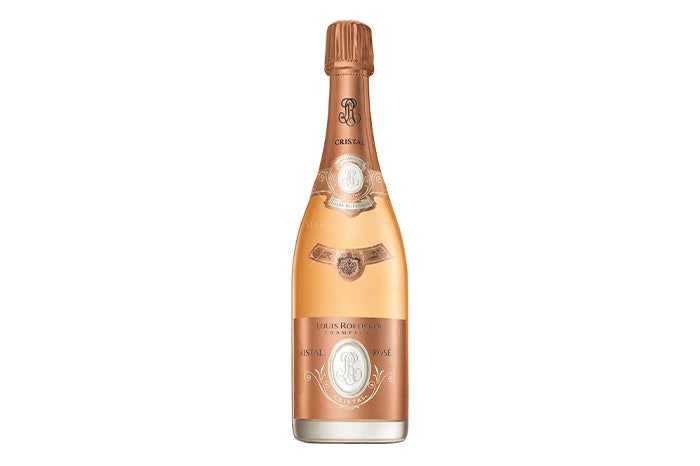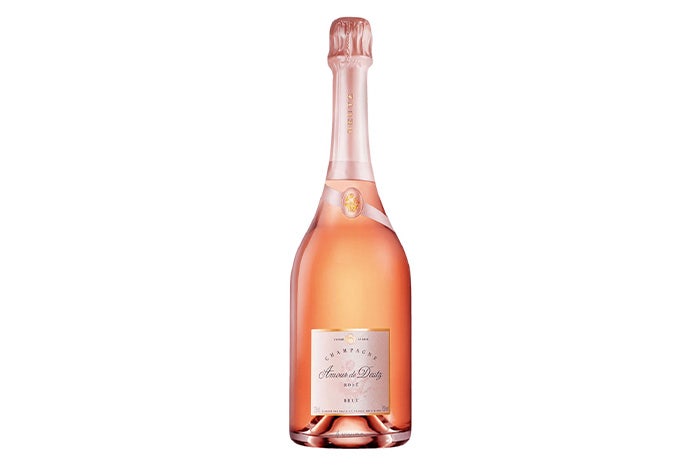There’s a lot of pressure (pun intended) that comes with choosing the right bottle of bubbly to kick off the new year. From nonvintage Champagne for every budget to splurge-worthy Champagnes to add to your cellar, there is a ton of variety out there.
Need help navigating it all? Our wine tasting experts break down everything you need to know about the best Champagne bottles to pop this New Year’s Eve, plus some intel on what Champagne is (to sound smart at your New Year’s shindig), how to properly open a bottle (so you won’t injure anyone with an exploding cork) and so much more. With our help, you’re sure to have the perfect sip when the clock strikes midnight.
You May Also Like: 15 of Our Favorite Champagne Cocktails
What Is Champagne?
Champagne is a sparkling wine from the Champagne region of northern France that uses the traditional method of fermentation to achieve bubbles. It is most commonly made from a mixture of Chardonnay, Pinot Noir and Pinot Meunier, but the grape varieties in Champagne can vary. For more information on Champagne, check out our beginner’s guide to Champagne.
To make Champagne, a dry, high-acid wine (called the base wine) is combined with sugar and yeast before being bottled and sealed. A second fermentation takes place in the sealed bottle, and the resulting carbon dioxide dissolves within the wine and creates bubbles. This also adds additional alcohol to the wine and yeasty, bread-like flavors.
The winemaker then removes the remaining sediment of yeast from the bottle and tops the liquid with a mixture of additional wine and sugar. The bottle is then resealed ahead of sale.
Champagne bottles that are labeled “nonvintage” have a mix of vintages to achieve a specific flavor. In contrast, a wine may be labeled simply “vintage” when it is made from exceptional grapes from one particular vintage. Some are labeled “multi-vintage,” which you can read about here. For more details about reading a Champagne label, you can check out our guide here.
Whether you’re popping bubbly as soon as the clock strikes midnight or pouring mimosas first thing in the morning for New Year’s Day brunch, read on for the best Champagne bottles to pop this year.
You May Also Like: The Difference Between Multi-Vintage and Nonvintage Champagnes
Best Overall
Philipponnat 2014 Clos des Goisses Extra Brut (Champagne)
This always-memorable single-vineyard Champagne is dominated by rich Pinot Noir. The vineyard, a steep slope facing the Marne river, has given an intense, concentrated wine that has aged so well. Touches of toast are equaled by the rich fruit and acidity. Drink this great wine now. Cellar Selection. 99 Points — Roger Voss
$349 Wine.comBest Splurge
Louis Roederer 2014 Cristal Rosé Brut (Champagne)
The epitome of great rosé Champagne, this is beautifully intense. The fruit and balanced mineral edge are united with mature red-currant flavors in a wine that is perfectly aged. It is an impressive wine that is ready to drink. Cellar Selection. 97 Points — R.V.
$799 Wine.comBest Budget
G. H. Mumm NV Cordon Rouge Brut (Champagne)
A classic nonvintage Champagne, this wine is familiar from the Cordon Rouge red sash, first registered in 1876, indented into the glass bottle. The wine veers comfortably between fresh acidity and touches of orange zest and maturity. Drink this wine now. 90 Points — R.V.
$54 Wine.comBest Brut Rosé
Deutz 2013 Amour de Deutz Rosé Brut (Champagne)
This is a fine, mature Champagne, its fruit and spice coming happily together. With an intense citrus edge and vivid fruitiness, the wine is at a fine point between maturity and freshness. Drink now. Cellar Selection. 95 Points — R.V.
$269 Wine.comBest Blanc de Blancs
Taittinger 2013 Comtes de Champagne Blanc de Blancs Grand Cru Chardonnay (Champagne)
This beautiful Chardonnay from five top Grand Cru vineyards is textured with fruit that is still impressively perfumed. Its concentration has allowed it to remain perennially young. Although there are hints of toastiness, the Champagne has many more years of potential. Drink now and at least up to 2027. Cellar Selection. 98 Points — R.V.
$ Varies Wine-SearcherBest Blanc de Noirs
Besserat de Bellefon NV Blanc de Noirs Brut Pinot Noir (Champagne)
Pure Grand Cru Pinot Noir, the wine is textured and tight. Dry and with citrus and white fruits, this fine Champagne is ready to drink. 90 Points — R.V.
$ Varies Wine-SearcherBest Vintage
Devaux 2012 D Millésime Brut (Champagne)
A soft, mature Champagne, this is also rich, balancing Pinot Noir and Chardonnay in a ripe combination. It has layers of acidity with more generous white fruit and toast flavors. Drink now. Cellar Selection. 93 Points — R.V.
$ Varies Wine-SearcherBest Multivintage
Laurent-Perrier NV Grand Siècle Brut Itération No. 26 (Champagne)
Tautly textured, the Champagne is delicious with a poise between white and citrus fruits along with touches of maturity coming through. Drink this magnificent wine now for its great balance and intensity. Cellar Selection. 97 Points — R.V.
$249 Wine.comWhy You Should Trust Us
All products featured here are independently selected by our team, which is comprised of experienced writers and wine tasters and overseen by editorial professionals at Wine Enthusiast headquarters. All ratings and reviews are performed blind in a controlled setting and reflect the parameters of our 100-point scale. Wine Enthusiast does not accept payment to conduct any product review, though we may earn a commission on purchases made through links on this site. Prices were accurate at the time of publication.
FAQs
Is Prosecco the Same as Champagne?
Both Prosecco and Champagne are sparkling wines, but they are quite different. Prosecco is a sparkling wine from northeast Italy made from the white grape Glera. It is typically made using the tank method of fermentation, where the wine is put into a sealed tank with yeast and sugar for the second fermentation. The wine is then bottled under pressure and sealed with a cork and wire cage. This allows for the wine to maintain the base wine’s flavors, without adding any additional characteristics. Prosecco is often light to medium-bodied, dry to off-dry and has flavors of apple and melon.
In comparison, Champagne, as mentioned previously, is made in France using the traditional method and from a different variety of grapes.
Does Champagne Go Bad?
Knowing how to properly store wine is important. Prior to opening, keep your Champagne bottle in a cool, dark spot out of direct sunlight or harsh lighting. It should not appear foggy or hazy, it should taste crisp and fresh without the flavor of vinegar and there shouldn’t be any residue floating in the bottle when opened.
Like any wine, proper storage after opening is key to keeping your bottle last past the night it’s popped. Store Champagne in the fridge for two to three days after opening and consider using a sparkling wine stopper or metal cork to retain as much of the effervescence as possible. And if your Champagne does go bad, there is plenty you can do with leftover Champagne.
You May Also Like: How to Store Champagne Properly
How Do You Open Champagne?
If you’re wondering how to open a Champagne bottle, remove the foil and loosen the wire cage wrapped around the cork. As soon as these have been removed, you’ll want to keep the cork covered with your hand for safety.
Next, hold the bottle at an angle with the cork in one hand and the base in the other. Begin to turn the base of the bottle slowly while maintaining a firm grip on the cork. The cork will then loosen, and the pressure will force the cork out with a “phut” sound. No wine lost!
Finally, serve Champagne well chilled (about 43 to 50 degrees Fahrenheit) and pour into a flute or tulip-shaped glass made for sparkling wines. The best Champagne temperature does vary slightly based on your personal preferences and what you’re serving it with. If you are considering decanting Champagne, read up on why you should or shouldn’t here.
How Many Glasses of Champagne Are in a Bottle?
The amount of Champagne glasses you can get from a bottle varies based on how much wine you’re pouring per glass. For a standard 750 ml bottle of wine, you’ll get about five five-ounce glasses of wine.
Last Updated: December 21, 2023



















